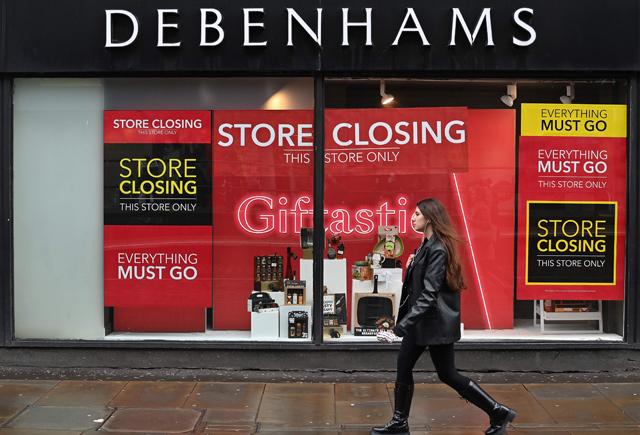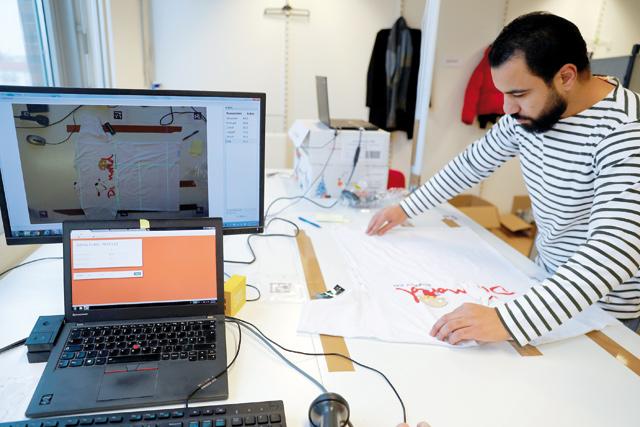You are here
E-commerce revolution drives European retail IPO rush
By Reuters - Mar 13,2014 - Last updated at Mar 13,2014
LONDON — European retailers are flocking to list in 2014 but traditional high-street chains are notable by their absence, replaced instead by the online, discount and convenience players that are shaking up shopping.
The flood of retail initial public offerings (IPOs) after a long drought is partly driven by recovering consumer confidence, but also by the fundamental changes wrought on the industry by the advent of e-commerce and shifting shopping habits.
“There is definitely a degree of optimism that hasn’t been seen for some time,” said Kate Ball-Dodd, a partner at law firm Mayer Brown who advises companies listing in London. “The IPOs also reflect expectations of what the retail market will look like in coming years.”
Appetite for new listings — particularly of British firms — is supported by hopes of a return to growth in retail sales in western Europe in 2014 after years of decline.
Robert Foster, co-head of European consumer and retail at investment bank Jefferies, said there had been as many British retail offerings in the past six months as there were in the previous 10 years, noting there were many more to come.
“For the first time in a long time, public investors are getting real access to all this innovation, entrepreneurship and growth,” he told the Retail Week Live conference.
Foster advised one of the highest-profile recent listings, that of online domestic appliances retailer AO World, which jumped about 40 per cent on its debut last month as investors bet it could mimic the success of fashion e-commerce site ASOS. It is still up about 30 per cent.
ASOS shares have more than doubled in the last year, helped by the fact that there are few listed online retailers for investors looking for exposure to booming e-commerce, seen doubling in Europe between 2012 and 2018.
While e-commerce expands, most high-street stores, apart from discounters and high-end retailers, have stagnant sales.
Limited liquidity
ASOS trades on 84 times expected earnings, compared to a fashion sector average of just 19 times. Meanwhile, AO World is trading at a rich value of 140 times enterprise value (EV) to earnings before interest, taxes, depreciation, and amortisation (EBITDA), almost double ASOS on 78.5, according to Eikon data. In comparison UK high street stalwart Marks & Spencer trades at an EV/EBITDA of 7.6.
Part of the online valuation boom is down to a lack of supply. The listings of Indian e-commerce venture Koovs on Monday and fashion retailer boohoo.com on Friday will add to only a small number of listed online retailers.
But Foster said UK retail “growth” companies expected to list this year would probably only add about £4 billion ($6.6 billion) of additional liquidity to a market of less than £20 billion.
“This remains a very small opportunity set,” he added, noting that pure online stocks were up 150 per cent since last January, outperforming a retail sector rise of about 15 per cent. “As seen in the US market, we expect growth companies to continue to be rewarded for a long time to come.”
Those dynamics would likely drive investor appetite if Europe’s biggest online fashion retailer Zalando decides to proceed with a multibillion-euro float this year in what could be the continent’s biggest technology offering since 2000.
Another potential IPO candidate is the Cdiscount online business of French retailer Casino.
However, some observers urge caution given lofty valuations for e-commerce, particularly as established chains fight back with their own online sales, leveraging store networks to provide more flexible delivery options than pure players.
“People forget it is difficult to make money selling online,” said Sophie Albizua, a former investment banker who co-founded eNova Partnership, a consultancy that advises traditional retailers on e-commerce.
“Just like in the early 2000s, you have to wonder if it is sound investment if you can’t make money out of it,” she added, referring to the bursting of a bubble in listed Internet companies that ultimately failed to turn a profit.
ASOS made a pre-tax profit last year of £55 million. According to their listing documents, boohoo made pre-tax profit of £3.2 million while AO made 8.7 million.
Cautious consumers
Those nervous about e-commerce might choose to seek exposure to a more down-to-earth retail trend which has its roots in the recession — the growth of discount stores.
Poundland, which sells items for a pound, rose by a third when it listed on Wednesday. Another discounter expected to come to market this year is B&M, chaired by former Tesco boss Terry Leahy.
“Six years after the downturn started, consumers are still quite cautious,” said Euromonitor retail expert Daniel Latev. “Poundland is not as international as some online retailers but it has quite a lot of opportunity for development in countries like Ireland and Spain.”
Another trend of shopping more frequently at local stores has helped shares in McColl’s, the British convenience and newsagent retailer, hold up since floating last month, outperforming the European retail index.
Another recent expansion focus for European retailers — emerging markets — has been looking less attractive for listings in recent months as expectations of tightening US monetary policy has triggered capital outflows.
German retailer Metro’s plan for an imminent stock market listing of a stake in its Russian wholesale business is under threat because of market turmoil over the crisis in Ukraine, sources told Reuters last week.
The Ukraine crisis overshadowed last month’s debut of Russian hypermarket chain Lenta, which is down 8 per cent since listing.
Carrefour has said it would decide by the end of the year whether it would sell a stake in its business in Brazil, its largest market after France, or proceed with an initial public offer of shares in 2015.
Related Articles
LONDON — UK department store chain Debenhams is to shut all its outlets, administrators for the collapsed group said Monday, with the loss o
BERLIN/MADRID — Models testing fashion brands like Adidas, Benetton and Gap are finding that almost a third of the shoes and clothes they tr
LONDON — So-called “ultra-fast fashion” has won legions of young fans who are able to snap up relatively cheap clothes online, but campaigne


















